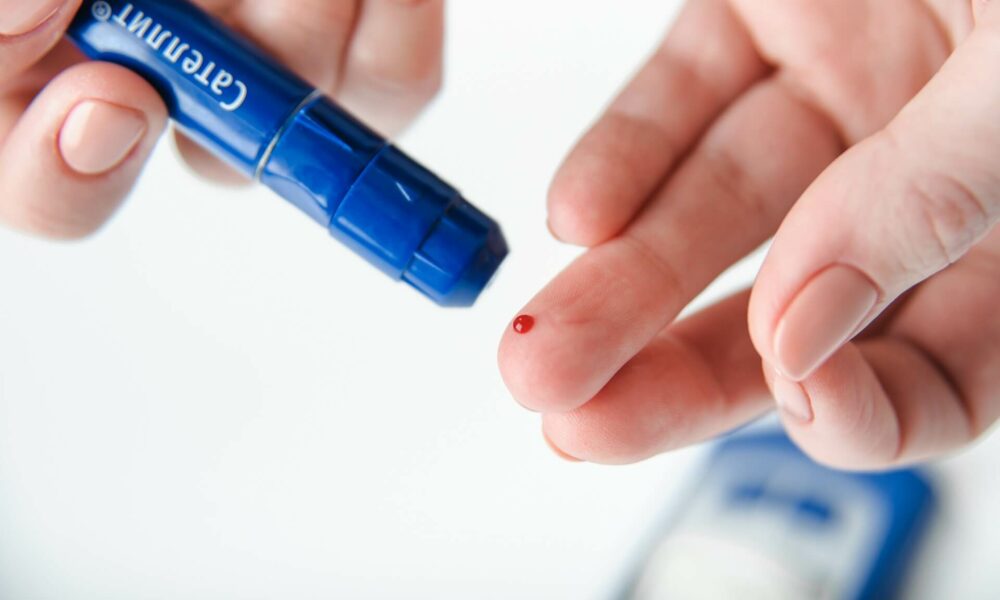Pancreatic Cancer Action’s Work on Diabetes in 2022
For Diabetes Week 2022, we look at the work we're currently doing as a charity that's related to the link between pancreatic cancer and diabetes, and look into why this research is key.

As a charity, our focus is on diagnosing pancreatic cancer early and saving lives. That’s why Pancreatic Cancer Action is currently funding and supporting research looking at the relationship between diabetes and pancreatic cancer, and if there are signs that can help us detect pancreatic cancer early.
The current research is being run in conjunction with the University of Surrey, University of Southampton, University of Oxford, Royal Surrey NHS Foundation Trust, and Policy Connect UK. It explores weight changes and glycaemic control five years before a diagnosis of pancreatic cancer. Glycaemic control is the medical term used to describe sugar levels in someone with diabetes.
Five hundred and ninety primary-care patients within the Oxford-Royal College of General Practitioners Network provided the patient data for the research. Eight thousand eight hundred fifteen patients were diagnosed with pancreatic cancer between January 2007 and August 2020 and were compared with 34,488 healthy people. Comparisons on age, gender, diabetes status and duration were formed. Findings are still to be concluded.
By quantifying the weight change and glycaemic levels and establishing when they occur, these changes can be used as a biomarker for pancreatic cancer. A biomarker is a form of naturally occurring characteristic (e.g. a gene or molecule) that predicts a disease’s future occurrence. By understanding the risk that these changes present, symptoms of pancreatic cancer could be caught earlier, aiding with an earlier diagnosis.

If we are able to establish this biomarker, then we need our front line healthcare professionals to be able to get patients a diagnosis as quickly as possible. That’s why we need all GPs to be able to make direct referrals for CT scans, so more people can be diagnosed in time for surgery.
The only potential cure for pancreatic cancer is surgery, which is only eligible for those whose cancer is caught early. This research is essential to aid earlier diagnosis and saving lives. By understanding more about biomarkers, we can assist the earlier diagnosis of pancreatic cancer and treat it before it is too late.
Research such as this is heavily reliant upon funding. To donate, please click here.
New-onset Diabetes and Pancreatic Cancer
After years of campaigning, funding research and lobbying, Pancreatic Cancer Action achieved a significant change to NICE guidance that has the potential to save up to 3,000 lives a year.
NICE Guidance (NG17) covering the management and diagnosis of diabetes in adults was updated to include advice to help identify pancreatic cancer. This reads:
For people aged 60 and over presenting with weight loss and new-onset diabetes, follow recommendations on assessing for pancreatic cancer in the section on pancreatic cancer in the NICE guideline on suspected cancer: recognition and referral. [2022]
This means that patients should be referred for an urgent direct access CT scan (to be done within two weeks), or an urgent ultrasound scan if CT is not available, to assess for pancreatic cancer in people aged 60 and over with weight loss and new-onset diabetes.
Research shows that new-onset diabetes has been identified to occur in up to 30% of pancreatic cancer patients and is something that can be detected in the presymptomatic phase. In some cases, this can be up to two years before the cancer is discovered. Type 2 diabetes is a symptom of pancreatic cancer, especially for those with a low or reducing BMI.
Pancreatic cancer is the deadliest of all the common cancers. In England, only 25/4% of pancreatic cancer patients survive one year after diagnosis and only 7.3% survive five years after diagnosis. Only around 10% can have surgery to remove pancreatic cancer due to the late stage it is diagnosed. This change in guidance will result in potentially thousands more being diagnosed for life saving surgery.